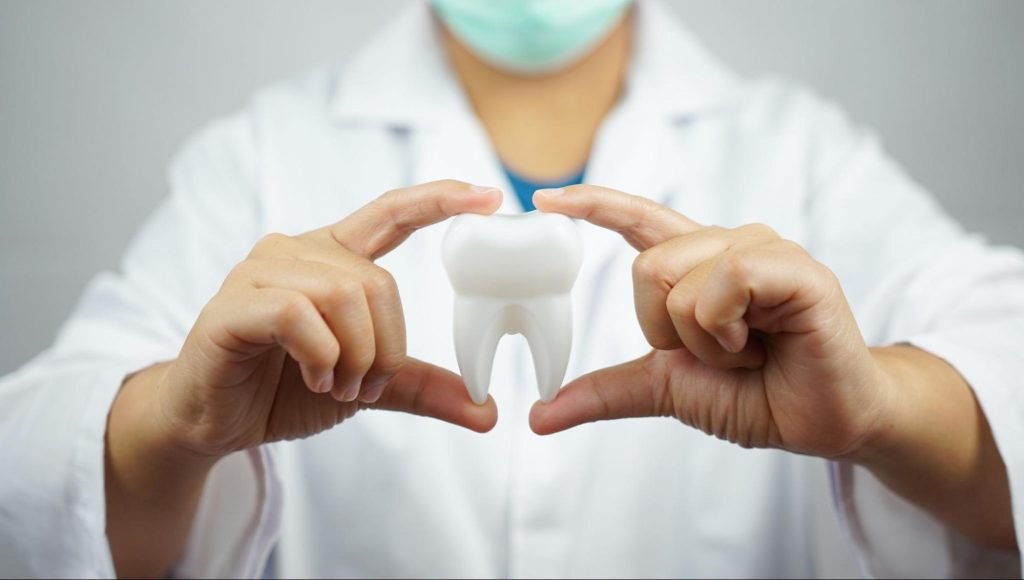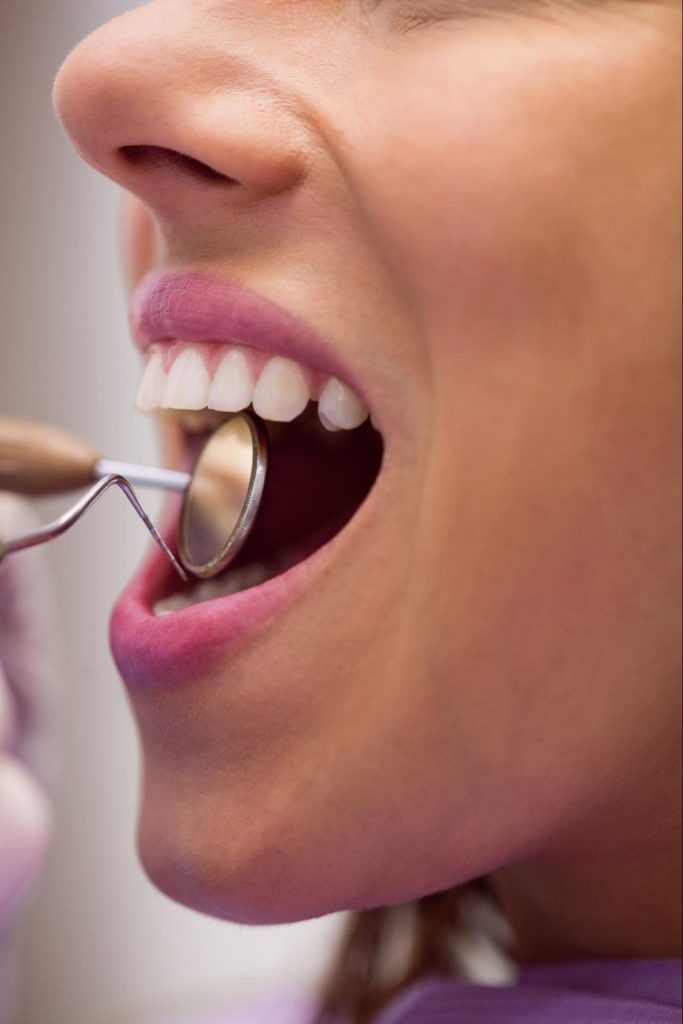Does Composite Bonding Hurt?
Are you wondering if composite bonding by a cosmetic dentist hurts? Well, let’s dive into the world of cosmetic procedures like composite bonding and find out! This popular cosmetic treatment is all about enhancing the appearance of your teeth. Picture this: a tooth-coloured resin material is skillfully applied to your pearly whites, transforming their shape, size, and colour. The best part? It’s a non-invasive and affordable option that cosmetic dentists offer!
Composite bonding has become a popular choice for those seeking a cost-effective alternative to dental implants and other dental treatment options. With its ability to revamp your smile without causing unnecessary pain or discomfort, it’s no wonder why so many people are giving it rave reviews for dental work and addressing dental issues.

So, if you’re looking for an easy way to elevate your dental aesthetics, cosmetic bonding by a cosmetic dentist might just be the perfect start. Let’s explore this remarkable technique further and discover how it can help you achieve that picture-perfect smile you’ve always dreamed of with cosmetic procedures like veneers and other cosmetic treatments.
Now that we’ve got your attention, let’s delve into the fascinating world of composite bonding, dental work that can enhance the look of your teeth. Whether you’re considering veneers or dental implants, composite bonding is a versatile option to consider.

Does Composite Bonding Cause Pain?
Composite bonding is a popular dental procedure used to improve the appearance of teeth by repairing chips, cracks, or discoloration. Many people considering this treatment wonder if it will cause pain. In general, composite bonding is a relatively painless process that does not require drilling or anaesthesia. This makes it a great alternative to dental implants, veneers, and crowns for those looking for cosmetic dental work.
During the dental bonding procedure, the dentist will first prepare the tooth surface by etching it with a mild acid gel. This helps create a rough texture on the tooth, allowing the composite resin material to bond effectively. While this step may cause slight sensitivity for some patients, it is typically brief and tolerable. Dental bonding is a common form of cosmetic bonding that involves dental work on the teeth.
Once the dental work for the tooth has been prepared, the dentist will apply layers of composite resin onto it and shape it to achieve the desired result. The material is then hardened using a special light, ensuring its durability and strength. Throughout this process, patients may experience minimal discomfort such as pressure or mild sensitivity. However, any discomfort experienced during dental work with composite bonding is generally short-lived and manageable.
Compared to other dental treatments like fillings, extractions, implants, veneers, or crowns that may involve more invasive procedures and local anaesthesia injections, composite bonding is considered far less painful. The absence of drilling or injections greatly reduces any potential pain associated with the treatment.
It’s important to note that individual experiences with dental implants may vary depending on factors such as personal pain tolerance and specific dental conditions. Some patients may have more sensitive teeth or gums than others, which could potentially increase their discomfort during composite bonding. However, dentists and their staff are trained to ensure patient comfort throughout the procedure and can take measures to minimise any potential pain.
Potential side effects of composite bonding
While composite bonding is a safe and effective treatment option, it’s important to understand the potential side effects associated with composite bonding.
Temporary tooth sensitivity
One of the most common side effects experienced after composite bonding is temporary tooth sensitivity. This sensitivity occurs due to the removal of a small amount of enamel from the tooth surface during the preparation process. The exposed dentin underneath may become more sensitive to hot or cold temperatures, causing discomfort for some patients.
However, it’s essential to note that this sensitivity is usually short-lived and subsides within a few days or weeks as your teeth adjust to the dental bonding or cosmetic bonding material. In the meantime, you can alleviate any discomfort by avoiding extremely hot or cold foods and beverages and using desensitising toothpaste recommended by your dentist at Oldbury Smile Spa.
Allergic reactions
While allergic reactions to composite materials used in bonding are extremely rare , they can occur in some individuals who have hypersensitivity to certain components. These allergic reactions typically manifest as localised swelling or redness around the bonded area.
If you have a history of allergies or sensitivities, it’s crucial to inform your dentist before undergoing composite bonding. They will conduct thorough testing beforehand to ensure that you are not at risk for an adverse reaction. By taking these precautions, dental professionals can minimise any potential complications and provide safe treatment options tailored specifically to your needs.
Discolouration over time
Another possible side effect of composite bonding is discolouration over time. Although modern dental composites are designed to resist staining and discoloration, they may still be susceptible to gradual colour changes due to factors like smoking, consuming highly pigmented foods or drinks (such as coffee or red wine), and poor oral hygiene.
To maintain the longevity and aesthetic appeal of your dental bonding or tooth bonding, it’s essential to practise good oral hygiene habits. This includes regular brushing and flossing, as well as visiting your dentist for professional cleanings and check-ups. You may want to limit your consumption of staining substances or use a straw when drinking beverages that could potentially stain your teeth with cosmetic bonding or composite veneers.
Comparing discomfort levels: Composite bonding vs other dental procedures
Patients often wonder about the level of discomfort they might experience during various dental treatments, such as teeth bonding, composite veneers, and cosmetic bonding.
Minimal Discomfort Compared to More Invasive Treatments
One of the key advantages of composite bonding is that it causes minimal discomfort compared to more invasive treatments like dental implants or veneers. These procedures often involve extensive dental work and can be quite invasive, resulting in higher levels of post-treatment discomfort. On the other hand, composite bonding is a less complex procedure that typically requires minimal preparation and alteration of the natural tooth structure.
No Wires or Brackets for Irritation
Unlike traditional braces which can cause irritation due to wires and brackets, composite bonding does not involve any such components. This makes it a comfortable option for those who wish to enhance their smile without enduring the potential discomfort associated with orthodontic treatment. Patients can avoid the annoyance of protruding wires or brackets rubbing against their cheeks or gums.
Significantly Lower Discomfort Levels than Other Cosmetic Procedures
Composite bonding stands out as an excellent choice for individuals seeking cosmetic solutions while minimising discomfort. The level of discomfort experienced during composite bonding is significantly lower than more invasive treatments. While every patient’s pain tolerance may vary, many individuals report little to no pain during or after composite bonding procedures.
In comparison, procedures like dental implants may require surgical intervention and healing time, leading to increased postoperative discomfort. Veneers also involve removing a small portion of enamel from the front teeth before placement, which can result in temporary tooth sensitivity.
Maintaining Oral Hygiene Throughout Treatment
During composite bonding treatment at Oldbury Smile Spa, maintaining good oral hygiene practices remains essential for optimal comfort and successful outcomes. Regular brushing and flossing help prevent any potential discomfort caused by plaque buildup or gum issues. Following the dentist’s instructions regarding oral hygiene and care after composite bonding ensures a smooth recovery process.
Recovery time and aftercare for composite bonding
Getting composite bonding done is a relatively simple and non-invasive treatment process that can help improve the appearance of your teeth. One common concern that patients have is whether the procedure will cause any discomfort or require a long recovery time.
No significant recovery time required
The great news is that there is no significant recovery time required after getting composite bonding done. Unlike more invasive dental procedures, such as dental implants or extractions, composite bonding does not involve any surgical incisions or extensive healing processes. This means that patients can resume their normal activities immediately following the procedure.
Resume normal activities right away
After having composite bonding treatment, you don’t need to put your life on hold. Whether it’s going back to work, enjoying your favourite foods, or engaging in physical activities, you can do it all without worrying about any restrictions. The treatment process itself is quick and straightforward, usually taking only one visit to your dentist’s office.
Maintain regular oral hygiene practices
To ensure the longevity of your composite bonding and keep your smile looking its best, it’s important to maintain regular oral hygiene practices. Just like with natural teeth, brushing twice a day with a soft-bristle toothbrush and fluoride toothpaste is crucial. Flossing daily helps remove plaque buildup between the bonded teeth and prevents gum disease.
Scheduling regular check-ups with your dentist is essential for monitoring the condition of your bonded teeth and identifying any potential issues early on.
Long-lasting results with proper care
By following these aftercare guidelines, you can enjoy long-lasting results from your composite bonding treatment:
- To prevent any damage to the dental bonding or composite veneers, it is important to avoid biting down on hard objects or using your teeth as tools.
- To maintain the colour of your dental bonding and composite veneers, limit your consumption of staining substances like coffee, tea, and tobacco products.
- Consider wearing a mouthguard if you participate in contact sports or grind your teeth at night to protect your composite bonding.
Remember, while composite bonding is durable and can last for several years with proper care, it may require periodic touch-ups or replacements over time. Regularly visiting your dentist will ensure that any necessary maintenance is addressed promptly.

Suitability and convenience of composite bonding
Composite bonding is a popular dental procedure that offers a convenient and effective solution for addressing various cosmetic concerns. Whether you have chipped teeth, gaps between your teeth, or other imperfections affecting your smile, composite bonding can be the perfect treatment to enhance your appearance.
One of the key advantages of composite bonding is its suitability for a wide range of cases. The bonding material used in this procedure is a tooth-coloured resin that can be precisely customised according to individual needs. Unlike porcelain veneers, which require multiple appointments and extensive preparation beforehand, composite bonding can often be completed in just one visit to the dentist’s office.
During the dental bonding appointment, your dentist will carefully apply the composite resin used for dental bonding directly onto the surface of your teeth. This dental bonding material is then shaped and moulded to achieve the desired result. The versatility of dental bonding with composite resin allows for seamless blending with your natural teeth, ensuring a flawless and natural-looking outcome.
Another aspect that makes composite bonding highly convenient is its ability to address common dental issues without the need for extensive procedures or multiple appointments. In many cases, minimal preparation is required before applying the bonding material. This means that you can achieve significant improvements in the appearance of your teeth without undergoing invasive treatments.
Composite bonding also offers additional benefits beyond its convenience. For example, it helps strengthen weakened teeth by providing an extra layer of protection. Furthermore, it can help restore proper function if you have difficulty biting or chewing due to damaged or misaligned teeth.
In terms of maintenance, dental bonding on composite teeth is relatively easy to care for. Dental bonding does not stain as easily as natural teeth but may require occasional touch-ups over time. It’s important to maintain good oral hygiene practices such as regular brushing and flossing to keep your dental bonding in optimal condition.
Before undergoing any dental procedure, including composite bonding, it’s crucial to schedule a consultation with your dentist. During this consultation, you can discuss your specific needs and expectations, ensuring that composite bonding is the right treatment for you. Your dentist will also be able to answer any questions you may have and provide personalised recommendations based on your unique situation.
Longevity and efficiency of composite bonding

Proper care plays a crucial role. With regular brushing, flossing, and dental check-ups, composite bonding can last for several years before requiring touch-ups or replacements. This durability makes it an attractive option for those seeking long-term results without the need for frequent maintenance.
Another advantage of composite bonding is its affordability compared to alternatives like porcelain veneers or crowns. While porcelain restorations may offer exceptional aesthetics and longevity, they often come at a higher price point. Composite bonding provides an excellent alternative for those looking for cost-effective solutions without compromising on quality.
Not only does composite bonding offer impressive results within a shorter time frame, but it also requires minimal preparation work compared to other dental procedures. In most cases, there is no need for extensive enamel removal or anaesthesia before starting the treatment.
During the dental bonding procedure, dentists apply a special light that activates and hardens the resin material onto the tooth surface quickly. This dental bonding and curing process ensures a strong bond between the tooth enamel and the composite material, resulting in a durable restoration that can withstand normal biting and chewing forces.
To make an informed decision about whether composite bonding is suitable for you, it’s important to consult with a qualified dentist who can assess your specific needs and provide personalised recommendations. They will be able to evaluate factors such as tooth condition, alignment issues, and desired outcome to determine if composite bonding is the right choice.
If you’re considering composite bonding, take into account its benefits in terms of pain management, minimal side effects, convenience, longevity of results, and overall efficiency. By understanding these advantages, you can confidently explore this option as a potential solution to improve your smile.
Remember that individual experiences may vary based on personal circumstances and oral health conditions. Consulting with a professional dentist will help address any concerns or questions you may have regarding the suitability of composite bonding for your specific situation.
FAQs
Does composite bonding hurt during or after the procedure?
Composite bonding typically does not cause significant pain during or after the procedure. Some patients may experience minor sensitivity or discomfort during the process due to slight tooth preparation or adhesive application. However, any discomfort is usually temporary and manageable.
How long does it take to recover from composite bonding?
Recovery time after composite bonding is minimal since it's a non-invasive procedure. You can resume normal activities immediately after leaving the dentist's office without any significant restrictions.
Can I eat normally after getting composite bonding?
Yes! Dental bonding, also known as composite bonded teeth, can withstand regular eating habits once the anaesthesia wears off. However, it's advisable to avoid biting into extremely hard objects or foods that may cause damage to dental bonding.
How long will composite bonding last?
The longevity of composite bonding depends on various factors such as oral hygiene practices, eating habits, and tooth grinding. With proper care and regular dental check-ups, composite bonding can last anywhere from 5 to 10 years.
Is composite bonding suitable for fixing chipped teeth?
Yes, composite bonding is an excellent option for repairing chipped teeth. The dentist will carefully shape the composite material to match the natural tooth structure and restore its appearance seamlessly.
Can I get composite bonding if I have crooked teeth?
While composite bonding can improve the appearance of crooked teeth to some extent, it may not be a comprehensive solution for severe misalignment issues. In such cases, orthodontic treatments like braces or clear aligners may be more appropriate.
Will my insurance cover the cost of composite bonding?
Insurance coverage for cosmetic procedures like composite bonding varies among providers. It's best to check with your insurance company regarding their policies and potential coverage options.
Remember that these answers are general guidelines and consulting with a professional dentist is crucial for personalised advice tailored to your specific needs.











